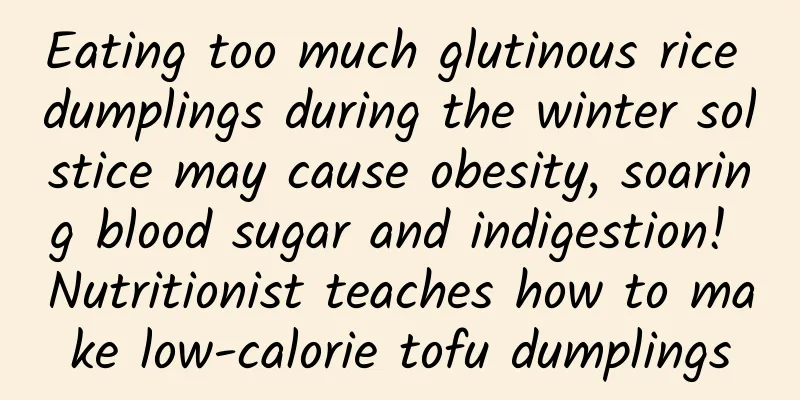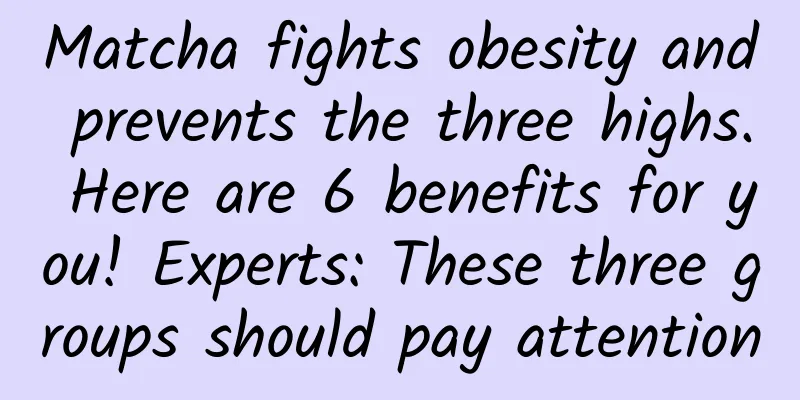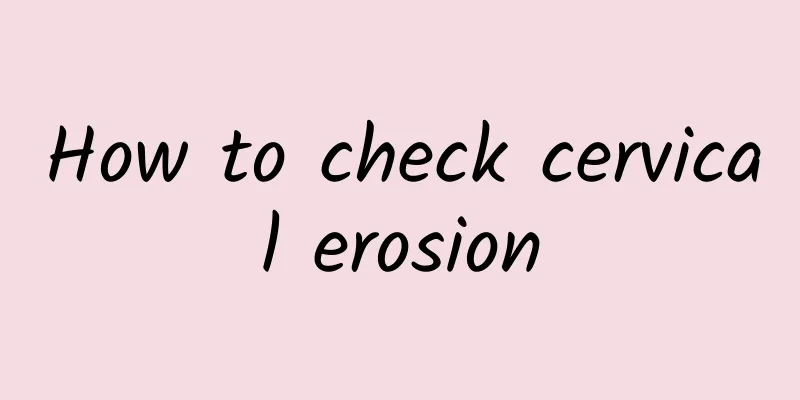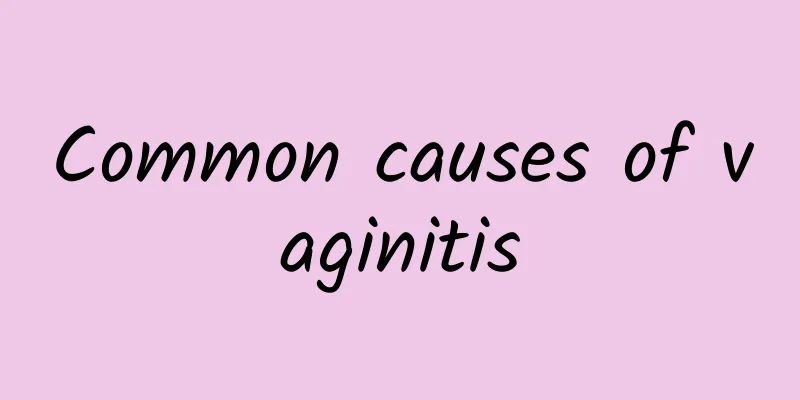Eating too much glutinous rice dumplings during the winter solstice may cause obesity, soaring blood sugar and indigestion! Nutritionist teaches how to make low-calorie tofu dumplings

|
The winter solstice is coming on December 22. The winter solstice is one of the important solar terms in the 24 solar terms in the farmers' calendar and is also the day with the shortest daylight. Many people choose to eat a bowl of warm dumplings on this day, but now there are many kinds of dumplings on the market. If the elderly or patients with chronic diseases in the family do not pay attention and consume too much, it may hide health crises. Nutritionist Lin Shuting from the Department of Nutrition at Taipei Tzu Chi Hospital provides homemade low-calorie rice dumplings made with tofu, allowing people to eat safely and healthily during the winter solstice festival. One sesame rice dumpling is equivalent to the calories of 1/4 bowl of riceTangyuan is a glutinous rice product made from whole grains. The calories of different fillings vary. Take large sesame or peanut glutinous rice balls as an example. One glutinous rice ball has about 75 calories, which is equivalent to the calories of 1/4 bowl of rice. If it is paired with different sweet soup bases such as red bean soup, peanut soup, etc., the calories will be higher. Nutritionist Lin Shuting pointed out: "Tangyuan is made from glutinous rice flour, fat and sugar. If consumed in excess, it can cause obesity, affect blood sugar and cause indigestion." Homemade Low-Calorie Tofu Rice BallsIn order to allow people to eat glutinous rice balls in a healthy way during the winter solstice festival, nutritionist Lin Shuting provides a recipe for homemade glutinous rice balls based on tofu. Because tofu is a high-quality protein, it replaces part of the glutinous rice flour and no extra oil is added. Therefore, compared with the small glutinous rice balls sold in the market, the calories of the glutinous rice balls are relatively lower if the same weight is considered. The calories of 10 glutinous rice balls are about 60 calories. The method is as follows: Ingredients: 90g glutinous rice flour, 110g soft tofu. Method: (3g per pill, about 65 pills can be made) 1. Add soft tofu to glutinous rice flour, mix well and knead into a ball. 2. Roll the glutinous rice dough into small dumplings and sprinkle with a little glutinous rice flour to prevent sticking. 3. Put the glutinous rice balls into the boiling water and cook until they float up, then take them out. 4. You can change the soup base according to your personal preferences, such as using longan and red dates to cook, or adding your favorite vegetables, soy products, and eggs to make salty dumplings. Nutritionist Lin Shuting reminds that people should only eat a small amount of glutinous rice balls to suit the occasion. Even for healthy people, they should not eat more than 2 large stuffed glutinous rice balls at a time, and no more than 20 small glutinous rice balls. (Photo courtesy of Taipei Tzu Chi Hospital) Sesame and peanut stuffing dumplings contain high phosphorus content, kidney patients need to pay special attentionThe winter solstice is approaching, and the elderly who suffer from chronic diseases such as diabetes, kidney disease and hyperlipidemia must pay special attention to their diet. If they want to eat healthily and without burden, nutritionist Lin Shuting mentioned that, in principle, if you want to control blood sugar, you must count the sugar content of glutinous rice balls in the total amount of the day and replace them with other staple foods; and fillings such as sesame and peanuts are foods with high phosphorus content. Kidney disease patients need to pay special attention and consume them in moderation. The soup base contains high sodium and potassium ions, so it is recommended to avoid drinking the soup; stuffed glutinous rice balls have high fat and refined sugar content, so patients with hyperlipidemia are recommended to choose unstuffed glutinous rice balls. In addition, when eating glutinous rice balls, you should just taste them lightly to suit the occasion. Even for healthy people, you should not eat more than 2 large stuffed glutinous rice balls at a time, and no more than 20 small glutinous rice balls. For the soup base, you can choose sugar-free soy milk, sugar-free tea, or use the sweetness of natural foods such as red dates, wolfberries, and longans to cook, without adding refined sugar. If you are cooking salty glutinous rice balls, you can add more seasonal fresh vegetables and tofu to increase fiber and protein intake and balance nutrition. |
Recommend
Several common clinical manifestations of uterine fibroids
The clinical manifestations of uterine fibroids a...
Can menopause be cured?
Can menopause be cured? Menopause is not unfamili...
What are the complications of pelvic peritonitis?
Pelvic peritonitis is a common disease and everyo...
When is the best time to treat cervical erosion in women? Women should know the best time to check cervical erosion
The most common gynecological disease in women is...
How is adenomyosis diagnosed?
The cervix of patients with adenomyosis is rarely...
What anti-inflammatory drugs should be taken after abortion? Which is less harmful, abortion or medication?
What anti-inflammatory drugs should I take after ...
What should you pay attention to when you have habitual miscarriage? There are 4 aspects
Nowadays, women are under pressure from many aspe...
What are the key points for the treatment of uterine fibroids? How to adjust after uterine fibroid surgery
Uterine fibroids are related to hormones. Because...
The following is an introduction to the safe abortion methods.
Many women who want to have an abortion want to k...
Cervical disease is not something you can bear, let alone suffer.
Cervical disease refers to various lesions that o...
Understanding the causes of bacterial vaginosis bleeding
Bacterial vaginitis not only causes vaginal itchi...
Exercise to stretch your legs in 3 easy steps
You can exercise your leg muscles by simply placi...
What causes cervicitis?
Acute cervicitis has become a common gynecologica...
What happens when uterine fibroids completely disappear? What should I eat to make uterine fibroids disappear?
What happens when uterine fibroids completely dis...
What are the 3 signs of uterine fibroids? What are the manifestations of uterine fibroids?
What are the 3 signs of uterine fibroids? How do ...









